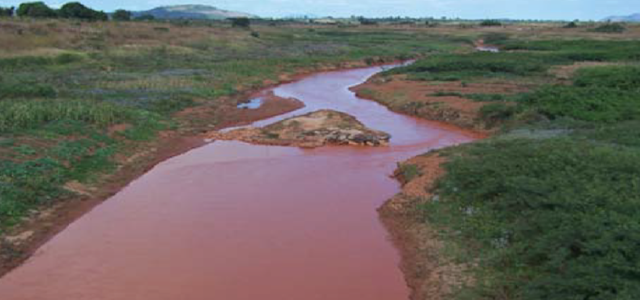The Buzi Basin encompasses three major tributaries of the Buzi, Lucite and Revue Rivers, with 88% of the catchment area located in Mozambique and 12% in Zimbabwe. The Zimbabwean side is heavily exploited for agriculture and related activities, while the mid and lower reaches of the basin in Mozambique are not as intensively utilised at present. However, several new and planned developments such as biofuels and sugar cane production will significantly change future water demand and allocation in the basin. Small-scale gold miners in the basin have been identified as the major polluter impacting surface water, groundwater and wetlands adjacent to the river. Other activities with adverse effects are agriculture, human settlements, deforestation, and river flow modification due to increased use.
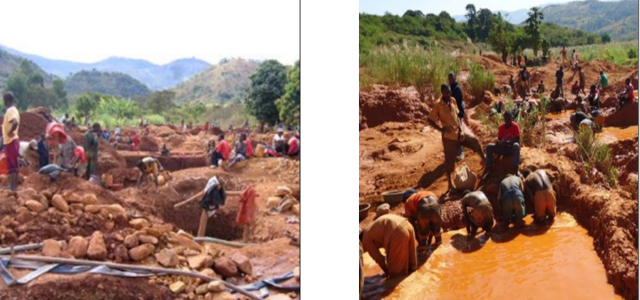
Mining activities and their impact on water quality in Manica, Buzi Basin
Added to this are inappropriate catchment management activities in various parts of the Buzi basin such as shifting and slope cultivation, charcoal burning, and gold panning, which have led to land degradation including increased sediment loads and deteriorating water quality. The main sectors linked to the immediate causes of land degradation are agriculture and mining at commercial and subsistence levels.
Among the visible impacts of land degradation in the Buzi basin is the declining water quality as a result of nutrient enrichment from agricultural activities, pollution from gold mining activities (especially artisanal gold panning) and changes in sediment load, amongst other sources of pollution. There have also been reports of the existence of heavy metals in certain localised areas due to mining activities. At a time when the types and sources of pollution are increasing, reduced volumes of water in the river system prevent effective dilution, compounding the water quality problem. This has affected socio-economic activities such as agriculture, fishing, industry, and water supply as well as causing deterioration of ecosystems.
According to estimated population projections conducted by Mozambique’s National Institute of Statistics in 2007, the population in the Basin on the Mozambican side was expected to increase from approximately 1,368,900 in 2020 to 1,705,000 by 2030.
Women and girls bear the brunt of poor-quality water because they have to travel long distances in search of clean water for domestic and other uses. This takes up a lot of their time which could have been expended on income-generating activities. It also keeps girls away from school.
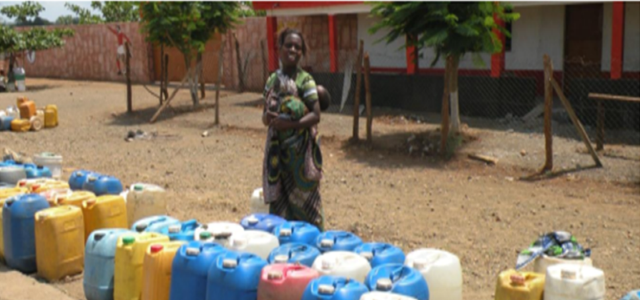
Queuing for Water, Buzi basin, Mozambique
“We are suffering as you can see. We wash our clothes in dirty water that has sand and soil but don’t have much of a choice because alternative sources such as piped water from a communal tap are expensive and going to a borehole for laundry water takes up the whole day affecting other duties expected of us as women. Soap is very expensive, so we spend a lot of money doing laundry countless times because these clothes hardly get clean using this dirty water,” said Selina, a 42-year-old mother of three in Dombe, in Manica District, Mozambique.
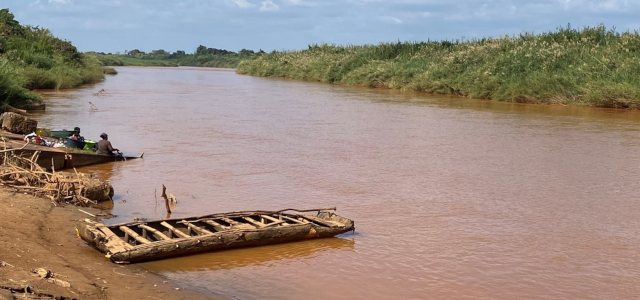
Woman doing laundry on the Lucite River a tributary of the Buzi basin 3rd August 2022
Selina added that the Lucite River used to have clean water a few years ago, and it brought life to communities and nature. She called for the need of urgency in dealing with the causes of the water pollution so that their lives could go back to normal.
There is also the risk of exposure to diseases and attacks by crocodiles. Benita, a female official at the Dombe Administration Office said: “If nothing is done about this problem of poor-quality water, women will not have time to themselves or for their families as they will always be busy. Worse still, there is a likelihood of being attacked by crocodiles by the riverside as one cannot see them coming because the water is very dirty.”
To mitigate the water and related ecological challenges, the Global Environment Facility (GEF) has funded a project called the “Management of competing water uses and associated ecosystems in Pungwe, Buzi and Save (BUPUSA) basins. The Project on the three basins shared by Mozambique and Zimbabwe, is implemented by the International Union for Conservation of Nature (IUCN) while the execution is led by GWPSA in partnership with the Governments of Mozambique and Zimbabwe. It targets the conservation and sustainable use of the transboundary water basin resources, including managing and preventing risks.
While laws exist to curb catchment degradation, enforcement measures are hardly implemented due to inadequate resources, and unclear and overlapping mandates amongst institutions. This problem continues to increase because of poverty, lack of lucrative alternative livelihoods, poor law enforcement and information awareness on the extent and impact of activities that result in catchment degradation.
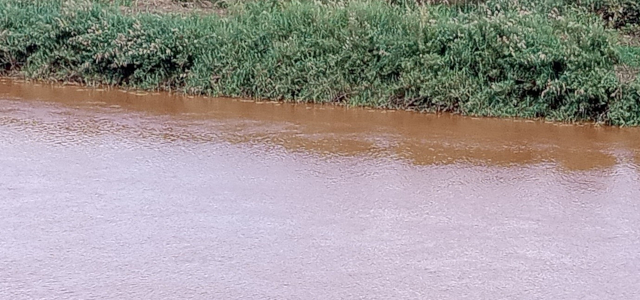
Water quality in the Buzi Basin
A key factor in tackling this challenge is increased awareness of the impact of deteriorating water quality and improved monitoring and enforcement of laws to lower the levels of pollution. Making use of the Polluter Pays Principle and appropriate incentives can minimise environmental and social damage and improve the water quality in the Buzi Basin. The Polluter Pays Principle is meant to protect society from dangerous activities that will affect the environment and their livelihoods. Those who discharge waste into the environment or produce pollution should bear the costs of cleaning it up to prevent damage to human health or the environment.
